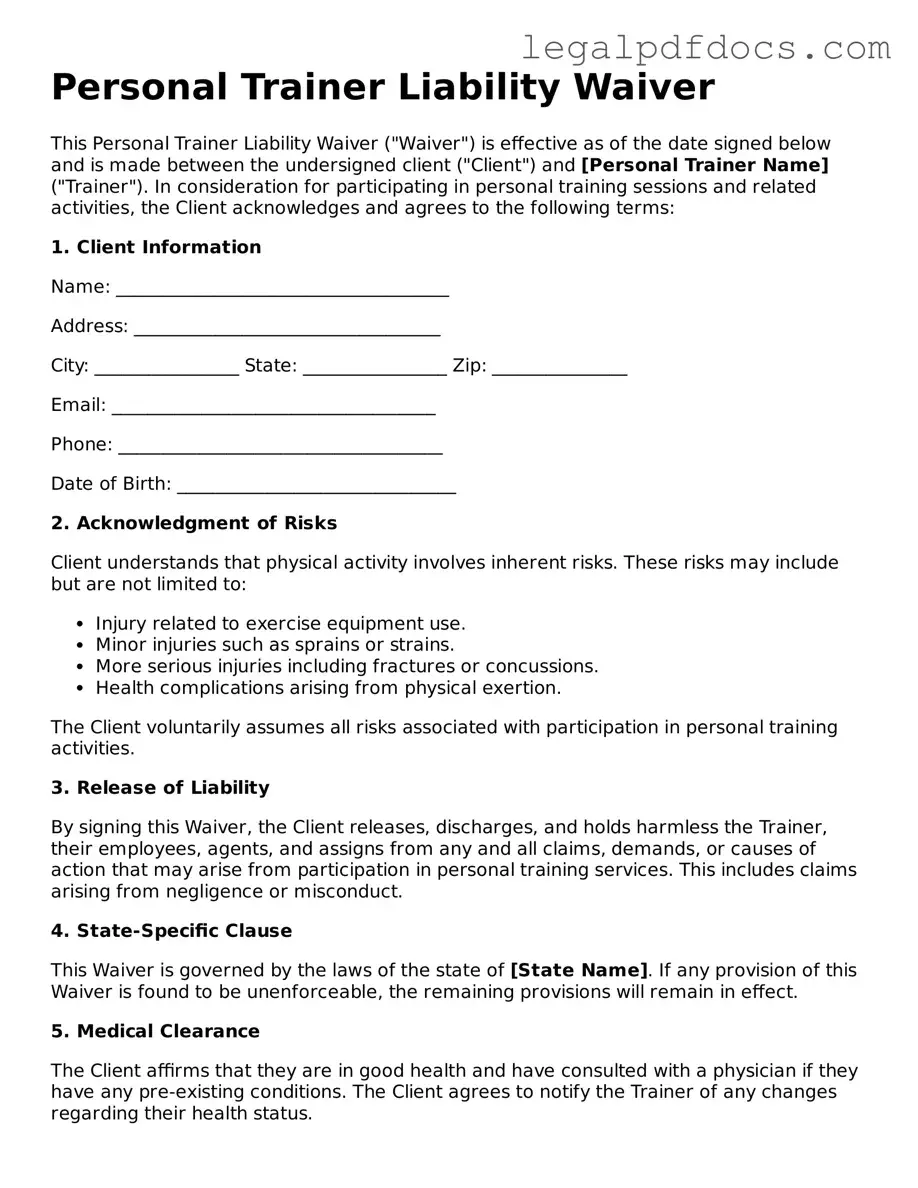Personal Trainer Liability Waiver Template
A Personal Trainer Liability Waiver is a document designed to protect personal trainers from legal claims related to injuries or accidents that may occur during training sessions. By signing this form, clients acknowledge the inherent risks involved in physical training and agree not to hold the trainer liable for any unforeseen incidents. Understanding this waiver is crucial for both trainers and clients to ensure a safe and transparent training environment.
Ready to take the next step? Fill out the form by clicking the button below!
Open Personal Trainer Liability Waiver Editor Here
